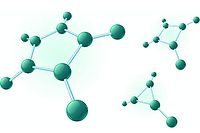Double-Digit Growth Expected for Radiation-Curing Inks
LEATHERHEAD, UK - The total market for radiation-curing ink for packaging will grow 24 percent from its 2011 base to almost 37,500 tonnes by 2016. In value terms, 60 percent-plus growth will take the market to over $883 million in the same period according to a new study by Pira International and Radtech Europe.
The study, The Future of Radiation Curing for Packaging, provides quantitative market sizes and forecasts for each key material, end use, region, and country. The study is based on extensive primary research, including in-depth interviews with suppliers, packaging converters, printers, and end users, including brand owners and retailers. This new study also analyses the latest technologies shaping the industry.
According to the study, the technologies of ultraviolet (UV) and electron beam curing provide several advantages for printers and converters. The ink, varnish or coating is cured immediately, allowing subsequent finishing operations to be carried out without having to wait for drying. A high-gloss finish may result that can sometimes save additional processes such as specialist lamination. The instant curing means that ink dot growth is minimized, providing sharper print and ink remains at the surface on absorbent substrates resulting in a brighter, more vibrant finish. The cured ink film can be tailored to provide excellent tough and resistant finishes with specific abrasion and chemical resistance.
Inkjet using UV inks is a fast-growing sector in signage and is becoming established in labels and packaging applications. According to the study, inkjet in labels, cartons and flexible packaging is expected to be the fastest-growing sector to 2016, with a 250 percent increase on the 2011 volume predicted.
In the medium term, Pira expects digital print will provide benefits to packaging supply chains in similar ways that graphics has benefited, and UV inkjet will take a significant portion of this. The technology will allow for economic short runs as brands develop more versions and run lengths decline. Packaging can be versioned, with regional variations and tie-in to local events offering opportunities for higher-value adaptations.
UV label printing is growing quickly. There are many narrow web print systems that compete directly with flexo and electrophotography, together with systems that effectively develop and improve the coding and marking functions. These provide the potential for supply chain improvement across many sectors as manufacturers see advantages in direct printing on demand, rather than buying in pre-print. As manufacturing methods develop, Pira expects to see opportunities for UV inkjet labeling, blister packaging and carton print to replace pre-printed static versions.
The Future of Radiation Curing for Packaging is available now. For more information, e-mail Stephen Hill at Stephen.hill@pira-international.com,
The study, The Future of Radiation Curing for Packaging, provides quantitative market sizes and forecasts for each key material, end use, region, and country. The study is based on extensive primary research, including in-depth interviews with suppliers, packaging converters, printers, and end users, including brand owners and retailers. This new study also analyses the latest technologies shaping the industry.
According to the study, the technologies of ultraviolet (UV) and electron beam curing provide several advantages for printers and converters. The ink, varnish or coating is cured immediately, allowing subsequent finishing operations to be carried out without having to wait for drying. A high-gloss finish may result that can sometimes save additional processes such as specialist lamination. The instant curing means that ink dot growth is minimized, providing sharper print and ink remains at the surface on absorbent substrates resulting in a brighter, more vibrant finish. The cured ink film can be tailored to provide excellent tough and resistant finishes with specific abrasion and chemical resistance.
Inkjet using UV inks is a fast-growing sector in signage and is becoming established in labels and packaging applications. According to the study, inkjet in labels, cartons and flexible packaging is expected to be the fastest-growing sector to 2016, with a 250 percent increase on the 2011 volume predicted.
In the medium term, Pira expects digital print will provide benefits to packaging supply chains in similar ways that graphics has benefited, and UV inkjet will take a significant portion of this. The technology will allow for economic short runs as brands develop more versions and run lengths decline. Packaging can be versioned, with regional variations and tie-in to local events offering opportunities for higher-value adaptations.
UV label printing is growing quickly. There are many narrow web print systems that compete directly with flexo and electrophotography, together with systems that effectively develop and improve the coding and marking functions. These provide the potential for supply chain improvement across many sectors as manufacturers see advantages in direct printing on demand, rather than buying in pre-print. As manufacturing methods develop, Pira expects to see opportunities for UV inkjet labeling, blister packaging and carton print to replace pre-printed static versions.
The Future of Radiation Curing for Packaging is available now. For more information, e-mail Stephen Hill at Stephen.hill@pira-international.com,
Looking for a reprint of this article?
From high-res PDFs to custom plaques, order your copy today!






